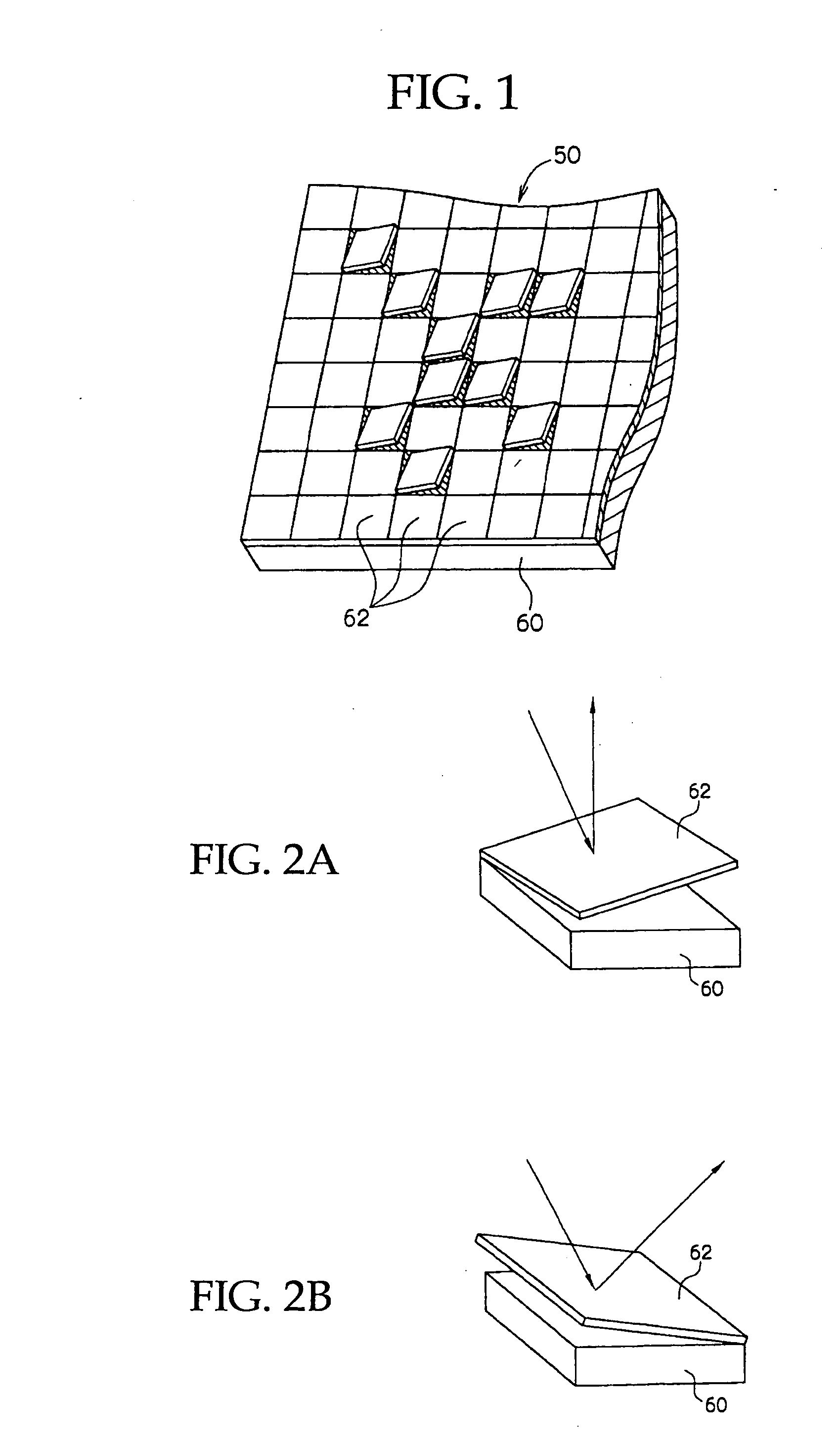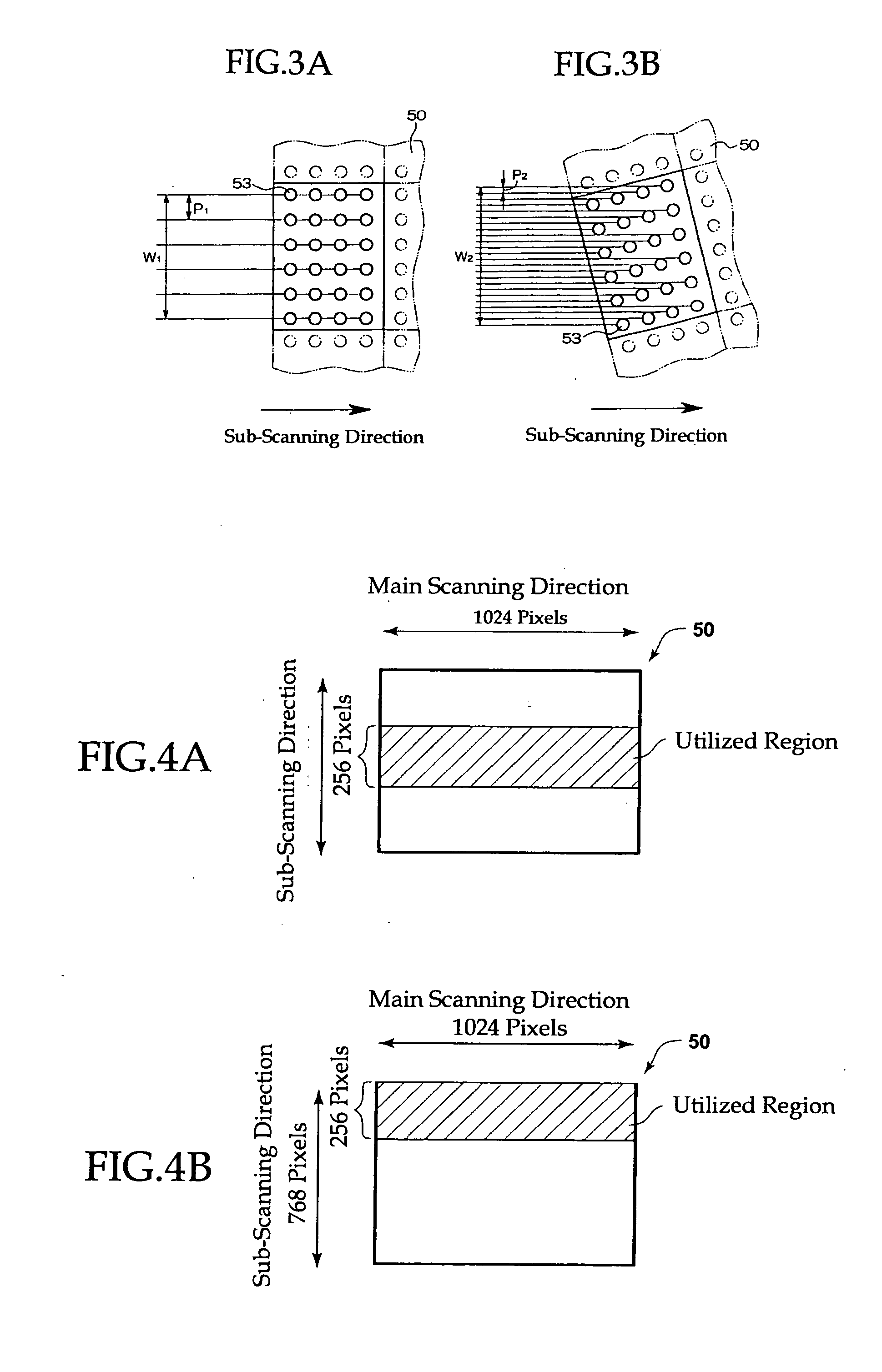Photosensitive Composition, Pattern Forming Material, Photosensitive Laminate, Pattern Forming Apparatus, and Pattern Forming Process
a technology of composition and pattern forming, which is applied in the direction of photosensitive materials for photomechanical equipment, microlithography exposure equipment, photosensitive materials, etc., can solve the problems of power output and wavelength uniformity that are far from satisfactory, and cannot allow for differences in spectral sensitivity, so as to prevent variations in pattern form and reproductivity. , the effect of constant photosensitivity distribution
- Summary
- Abstract
- Description
- Claims
- Application Information
AI Technical Summary
Benefits of technology
Problems solved by technology
Method used
Image
Examples
example 1
Preparation of Pattern Forming Material for Dry Film Resist
[0687]Over a surface of a polyethylene terephthalate film having a thickness of 20 μm serving as the support set forth, a photosensitive composition solution for dry film resist was applied, and the surface of the support was dried to form a photosensitive layer having a thickness of 15 μm on the support, thereby preparing the above-noted pattern forming material for dry film resist.
[Composition of Photosensitive Composition for Dry Film Resist]Methyl methacrylate / styrene / benzyl60parts by massmethacrylate / methacrylic acid copolymer(copolymer composition (mass ratio):8 / 30 / 37 / 25; mass averagemolecular mass: 60,000; acid value: 163)Polymerizable monomer represented by7.0parts by massthe following formula (75)Adduct between hexamethylene7.0parts by massdiisocyanate and tetraethylene oxidemonomethacrylate (molar ratio: 1 / 2)N-methylacridone0.11parts by mass2,2-bis(o-chlorophenyl)-4,4′,5,5′-2.17parts by masstetraphenylbiimidazoleN-...
example 2
[0700]A pattern forming material for dry film resist and a photosensitive laminate for dry film resist were produced in the same manner as in Example 1 except that N-methyl acridone in the photosensitive composition solution for dry film resist was changed to 10-N-butyl-2-chloroacridone. The maximum absorption wavelength of 10-N-butyl-2-chloroacridone as the above-noted photosensitizer was 365 nm.
[0701]With respect to the pattern forming material for dry film resist and the photosensitive laminate, the shortest developing time, the spectral sensitivity, and the minimum exposure dose capable of forming a pattern were measured in the same manner as in Example 1. Further, variations in line width of the formed lines were measured in the same manner as in Example 1. Table 3 shows the measurement results. The shortest developing time was 7 seconds.
example 3
[0702]A pattern forming material for dry film resist and a photosensitive laminate for dry film resist were produced in the same manner as in Example 1 except that the content of 2,2-bis(o-chlorophenyl)-4,4′,5,5′-tetraphenylbiimidazole was changed to 0.50 parts by mass.
[0703]With respect to the pattern forming material for dry film resist and the photosensitive laminate, the shortest developing time, the spectral sensitivity, and the minimum exposure dose capable of forming a pattern were measured in the same manner as in Example 1. Further, variations in line width of the formed lines were measured in the same manner as in Example 1. Table 3 shows the measurement results. The shortest developing time was 7 seconds.
PUM
| Property | Measurement | Unit |
|---|---|---|
| wavelength range | aaaaa | aaaaa |
| wavelength | aaaaa | aaaaa |
| wavelength | aaaaa | aaaaa |
Abstract
Description
Claims
Application Information
 Login to View More
Login to View More - R&D
- Intellectual Property
- Life Sciences
- Materials
- Tech Scout
- Unparalleled Data Quality
- Higher Quality Content
- 60% Fewer Hallucinations
Browse by: Latest US Patents, China's latest patents, Technical Efficacy Thesaurus, Application Domain, Technology Topic, Popular Technical Reports.
© 2025 PatSnap. All rights reserved.Legal|Privacy policy|Modern Slavery Act Transparency Statement|Sitemap|About US| Contact US: help@patsnap.com



